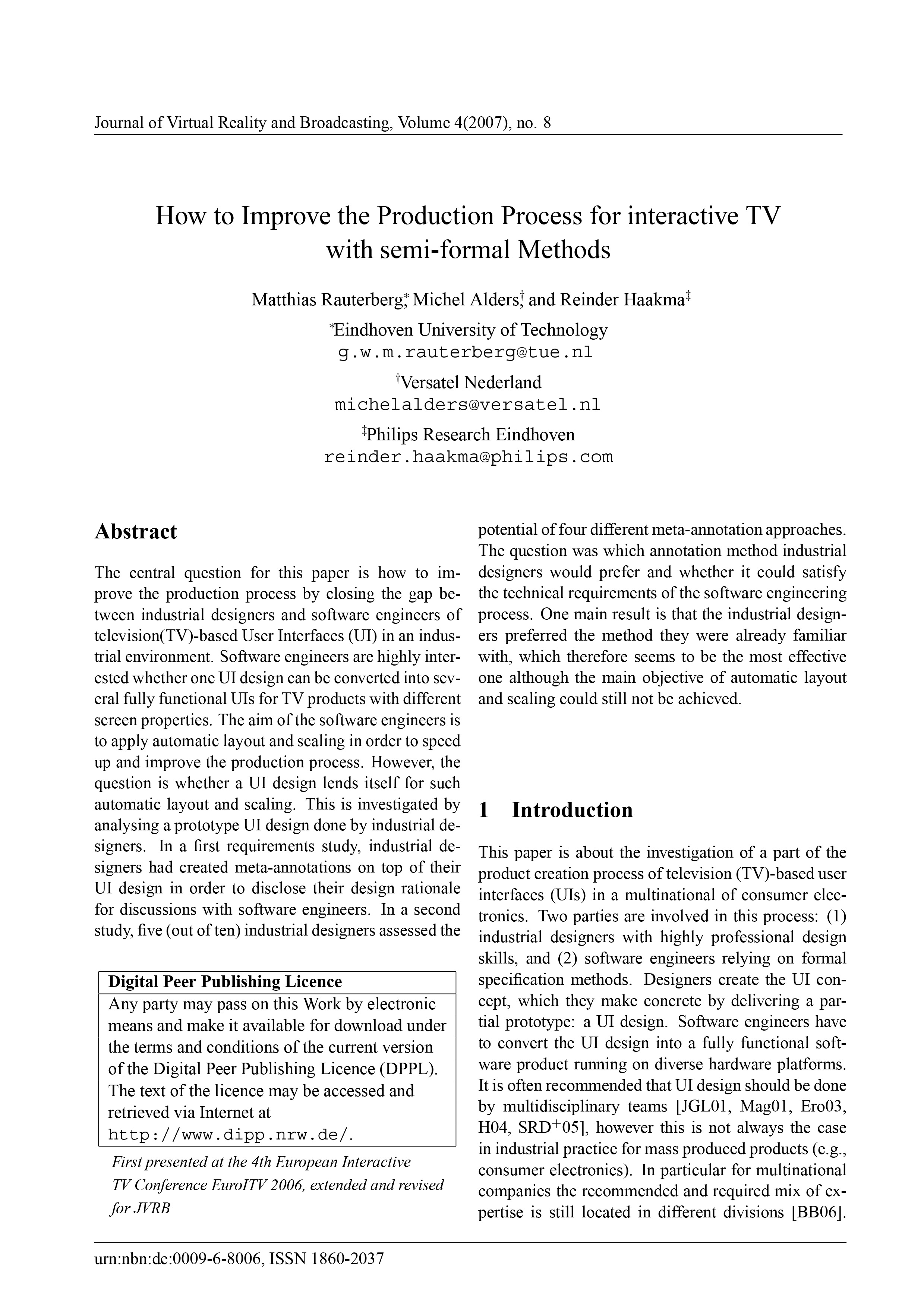How to Improve the Production Process for interactive TV with semi-formal Methods
DOI:
https://doi.org/10.20385/1860-2037/4.2007.8Keywords:
Interactive TV, User Interface DesignAbstract
The central question for this paper is how to improve the production process by closing the gap between industrial designers and software engineers of television(TV)-based User Interfaces (UI) in an industrial environment. Software engineers are highly interested whether one UI design can be converted into several fully functional UIs for TV products with different screen properties. The aim of the software engineers is to apply automatic layout and scaling in order to speed up and improve the production process. However, the question is whether a UI design lends itself for such automatic layout and scaling. This is investigated by analysing a prototype UI design done by industrial designers. In a first requirements study, industrial designers had created meta-annotations on top of their UI design in order to disclose their design rationale for discussions with software engineers. In a second study, five (out of ten) industrial designers assessed the potential of four different meta-annotation approaches. The question was which annotation method industrial designers would prefer and whether it could satisfy the technical requirements of the software engineering process. One main result is that the industrial designers preferred the method they were already familiar with, which therefore seems to be the most effective one although the main objective of automatic layout and scaling could still not be achieved.
Published
2007-03-23
Issue
Section
EuroITV 2006





